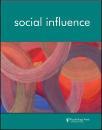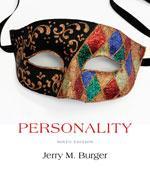
Professor
Educational Background
Ph.D., University of Missouri
Social Psychology
Research and Representative Publications
Obedience
I conducted a partial replication of Stanley Milgram's famous obedience studies that allowed for useful comparisons with the original investigations while protecting the well-being of participants. We found obedience rates in 2006 only slightly lower than what Milgram found 45 years earlier.
The research was featured in the January 3, 2007 broadcast of ABC News' Primetime.
Purchase a copy of the broadcast
You can read some reactions to the research here:
 |
 |
Burger, J. M. (2015). Obedience. In K. Williams, S. Harkins & J. M. Burger (Eds.), Handbook of social influence. New York: Oxford University Press.
Burger, J. M. (2014). Situational features in Milgram’s experiment that kept his participants shocking. Journal of Social Issues, 70, 489-500. doi: 10.1111/josi.12073 [PDF]
Burger, J. M., Girgis, Z.M.,& Manning, C.C. (2011). In their own words: Explaining obedience to authority through an examination of participants' comments. Social Psychological and Personality Science, 2, 460-466. [PDF]
Burger, J. M. (2009). Replicating Milgram: Would people still obey today? American Psychologist, 64, 1-11.
Compliance
My research on compliance has examined sequential-request techniques and variables that increase or decrease agreement to a request.
Burger, J. M., & Caputo, D. (2015). The low-ball compliance procedure: A meta-analysis. Social Influence, 10, 214-220. doi: 10.1080/15534510.2015.1049203 [PDF]
Burger, J. M. & Caldwell, D.C.(2011). When opportunity knocks: The effect of a perceived unique opportunity on compliance. Group Processes and Intergroup Relations, 14, 671-680. [PDF]
Burger, J. M., Sanchez, J., Imberi, J. E., & Grande, L. R. (2009). The norm of reciprocity as an internalized social norm: Returning favors even when no one finds out. Social Influence, 4, 11-17. [PDF]
Burger, J. M., Hornisher J., Martin, V. E., Newman, G., & Pringle, S. (2007). The pique technique: Overcoming mindlessness or shifting heuristics? Journal of Applied Social Psychology, 37, 2086-2096. [PDF]
Burger, J. M., Messian, N., Patel, S., del Prado, A., & Anderson, C. (2004). What a coincidence! The effects of incidental similarity on compliance. Personality and Social Psychology Bulletin, 30, 35-43. [PDF]
Burger, J. M., Soroka, S., Gonzago, K., Murphy, E., & Somervell, E. (2001). The effect of fleeting attraction on compliance to requests. Personality and Social Psychology Bulletin, 27, 1578-1586. [PDF]
Burger, J. M. (1999). The foot-in-the-door compliance procedure: A multiple-process analysis and review. Personality and Social Psychology Review, 3, 303-325. [PDF]
Perception of and Motivation for Personal Control
Decades ago, I developed the Desirability of Control Scale to measure individual differences in the extent to which people are motivated to feel in control of the events in their lives. I have conducted extensive research on this concept as well as on the effects of increases and decreases in the amount of personal control individuals perceive they have.
Burger, J. M. (in press). And the wisdom to know the difference: Locus of control and desire for control. In F. J. Infurna & J. W. Reich (Eds.), Perceived control: Theory, research, and practice in the first 50 years. New York: Oxford University Press.
Burger, J. M., & Lynn, A. L. (2005). Superstitious behavior among American and Japanese professional baseball players. Basic and Applied Social Psychology, 27, 71-76. [PDF]
Burger, J. M. (1992). Desire for control: Personality, social and clinical perspectives. New York: Plenum.
Burger, J. M. (1989). Negative reactions to increases in perceived personal control. Journal of Personality and Social Psychology, 56, 246-256. [PDF]
Social Norms
I have conducted research on the effects of descriptive norms (i.e., what other people do) on a number of behaviors. These behaviors include food choices, binge drinking, and everyday health behaviors.
Burger, J. M., Bender, T. J., Day, L., DeBolt, J. A., Guthridge, L., How, H. W., Meyer, M., Russell, K. A., & Taylor, S. (2015). The power of one: The relative influence of helpful and selfish models. Social Influence, 10, 77-84. doi: 10.1080/15534510.2014.926291 [PDF]
Burger, J. M. & Shelton, M. (2011) Changing everyday health behaviors through descriptive norm manipulations. Social influence, 6, 69-77. [PDF]
Burger, J. M., LaSalvia, C. T., Hendricks, L.A., Mehdipour, T., &Neudeck, E. M. (2011). Partying before the party gets started: The effects of descriptive norms on pre-gaming behavior. Basic and Applied Social Psychology, 33, 220-227. [PDF]
Burger, J. M., Bell, H., Harvey, K., Johnson, J., Stewart, C., Dorian, K., & Swedroe, M. (2010). Nutritious or delicious? The effect of descriptive norm information on food choice. Journal of Social and Clinical Psychology. [PDF]
» More Publications
Returning Home

My book "Returning Home: Reconnecting with our Childhoods" (Rowman-Littlefield) describes my research on people who visit childhood homes. That research finds that millions of Americans have made a trip specifically to see the places that comprised the landscape of their childhood. They visit homes they once lived in, as well as other significant places from their past, to reconnect with the person they once were. The visits are often emotional and sometimes therapeutic. The book describes the reasons people make these trips and the experiences they encounter. You can obtain more information about the book and the research at http://www.returninghomebook.com.
Social Influence Special Issue

I served as the guest editor for a special issue of Social Influence, “Individual Differences and Social Influence.” The articles selected for this volume demonstrate how social influence researchers can obtain a greater understanding of the phenomena they study by incorporating individual difference variables into their research. Click here for more information about the special issue.
Personality Textbook

My undergraduate textbook, Personality, is now in its ninth edition (2015, Cengage). The book is organized to reflect my belief that the study of personality should not be limited to either the traditional theories approach or to a strict empirical presentation. Rather, I have maintained from the first edition that a full understanding of personality requires an examination of theory and research. After an introductory chapter and a chapter on personality research methods, the book is divided into seven sections. Each section reflects a different approach to understanding personality — Freudian, Neo-Freudian, Trait, Biological, Humanistic, Behavioral/Social Learning, and Cognitive.
Each of these sections contains two chapters. The first chapter presents information about theory, assessment and application. The second is devoted to relevant research. Each of the research chapters is divided into three to five research topics. Each topic represents a well-developed area of personality research with ties to the corresponding theories. For example, the topics for the Freudian research chapter are dream interpretation, defense mechanism, Freud's theory of humor, and hypnosis. The topics in the trait research chapter include achievement motivation, Type A and anger, social anxiety, emotions, and optimism-pessimism. The chapters reflect my belief that students learn about research best by seeing programs of research, rather than a few isolated examples. There are 26 research topics presented in depth in the book. My undergraduate textbook, Personality, is now in its eighth edition (2011, Wadsworth/Cengage). The book is organized to reflect my belief that the study of personality should not be limited to either the traditional theories approach or to a strict empirical presentation. Rather, I have maintained from the first edition that a full understanding of personality requires an examination of theory and research. After an introductory chapter and a chapter on personality research methods, the book is divided into seven sections. Each section reflects a different approach to understanding personality — Freudian, Neo-Freudian, Trait, Biological, Humanistic, Behavioral/Social Learning, and Cognitive.
For more information, click here.
Personality Scales
Preference for Solitude Scale (DOC)
Desirability of Control Scale (DOC)
More Information about Jerry M. Burger
Courses
- PSYC 43: Research Methods
- PSYC 102: Writing in Psychology
- PSYC 150: Social Psychology
- PSYC 151: Advanced Topics in Social Psychology
- PSYC 160: Personality
Curriculum vitae | Curriculum vitae |
|---|